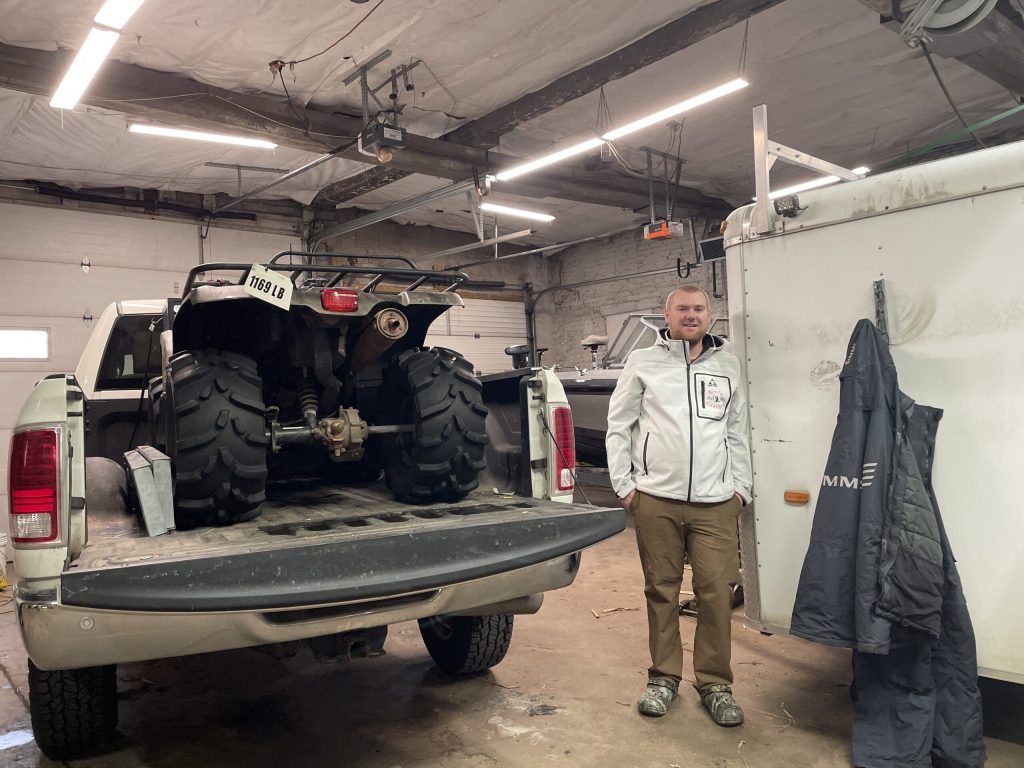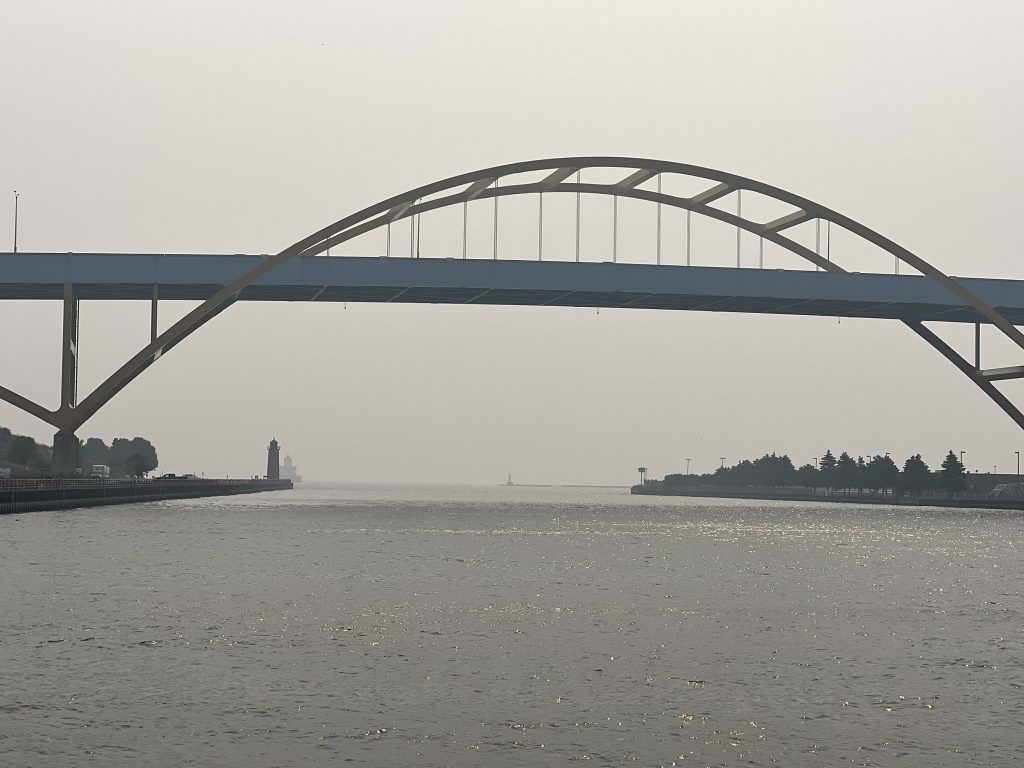Warmer Than Average Lake Michigan Decimates Ice Fishing
Lake Superior water temperatures also up, reducing ice coverage.
When the lakes start to freeze and many Wisconsinites head inside, fishing charter captain Luke Chatfield does the opposite. He guides his customers over the ice of Green Bay, searching for perch and whitefish.
With 10-16 sixteen inches of ice, 25-year-old Chatfield said, he can easily drive onto the bay in UTVs.
“We could drive our side-by-sides five, six miles out,” he said. “We could drive nearly clearly across the bay of Green Bay.”
This year, with winter just days away, Lake Michigan and Lake Superior are unseasonably warm again.
On Tuesday, Lake Michigan’s surface temperature was about 44 degrees Fahrenheit, up 2.8 degrees from the long-term average for that date. Lake Superior’s was 40.8, up 1.8 degrees, according to data from the National Oceanic and Atmospheric Administration.
Both temperatures were the third-highest recorded temperatures on that day since data collection began in 1995.
Meanwhile, over all of 2024, Lake Superior’s year-to-date average has come in at 47.1 degrees. That number is 53.2 degrees for Lake Michigan. Both are over 3 degrees warmer than the 30-year average.
Warm winters are an issue for Chatfield, who relies on ice-fishing trips for about a quarter of his charter’s annual income.
“That income in the winter is kind of crucial to help you get started for next year,” he explained.
It helps him repair his boats and buy new equipment.
“The last two years, where we’ve had really bad ice conditions, it kind of puts a damper on starting our next year’s season,” he said.

Luke Chatfield, who operates Ninja Charters in Port Washington, stands in his shop on Dec. 17, 2024. Nick Rommel/WPR
Warm lakes are complicated systems
While air temperatures play a “big role” in regulating surface temperatures, the Great Lakes are a “very complex” system, explained NOAA scientist Bryan Mroczka.
“These lakes have a memory,” he said. “They hold heat that they’ve acquired from months ago, even a year ago, within the water’s column.”
“We’ve been running hot,” he said of this year’s lake temperatures. “Not necessarily record temperatures every day of the year, but we’ve been running toward the top of the envelope.”
As for this winter’s ice cover, Mroczka said it’s likely warm temperatures will delay ice formation.
“We’re getting more confident that the start of the ice season is going to be later,” he said. “Which is the trend we’ve seen over the last 50 years or so.”
He explained a late start doesn’t necessarily mean the ice season will be a “bust,” either.
“The winter is very long. We could have a very cold second half of the winter,” Mroczka said.
He said the key to ice cover is consistent cold weather, rather than occasional cold snaps.
“When we see winters with more extremes, where it’s cold and then really warm, that’s not a great scenario for forming very thick and lasting ice,” he said.

A surface temperature of the Great Lakes for Tuesday, Dec. 17, 2024. Photo courtesy of the National Oceanic and Atmospheric Administration
Ice fishing guide adapts to temperatures
Chatfield has adapted to those highly variable ice conditions. He takes customers into the small, frozen inlets within Green Bay on foot. But it knocks him down from about 120 customers per weekend, housed in permanent ice shacks, to just 32.
For brown trout and steelhead, he’s started taking people onto the frozen harbors in Kenosha, Racine and Milwaukee. Warm weather causes problems here, too.
“The shorelines hold heat, so when the sun blares down on the rocks, it hits the shallow water, it melts that ice away from the shore the fastest,” he explained.
He’s adapted by building wooden bridges between piers and thicker, intact ice in the middle of the harbor.
“We use as much safety equipment as we can,” he said, mentioning floating ice suits, spud bars and ice picks.
But he added that ice is never “100 percent safe,” and for him, experience is the best teacher.
Lake Michigan, Superior warmer than average going into winter was originally published by Wisconsin Public Radio.
If you think stories like this are important, become a member of Urban Milwaukee and help support real, independent journalism. Plus you get some cool added benefits.






















